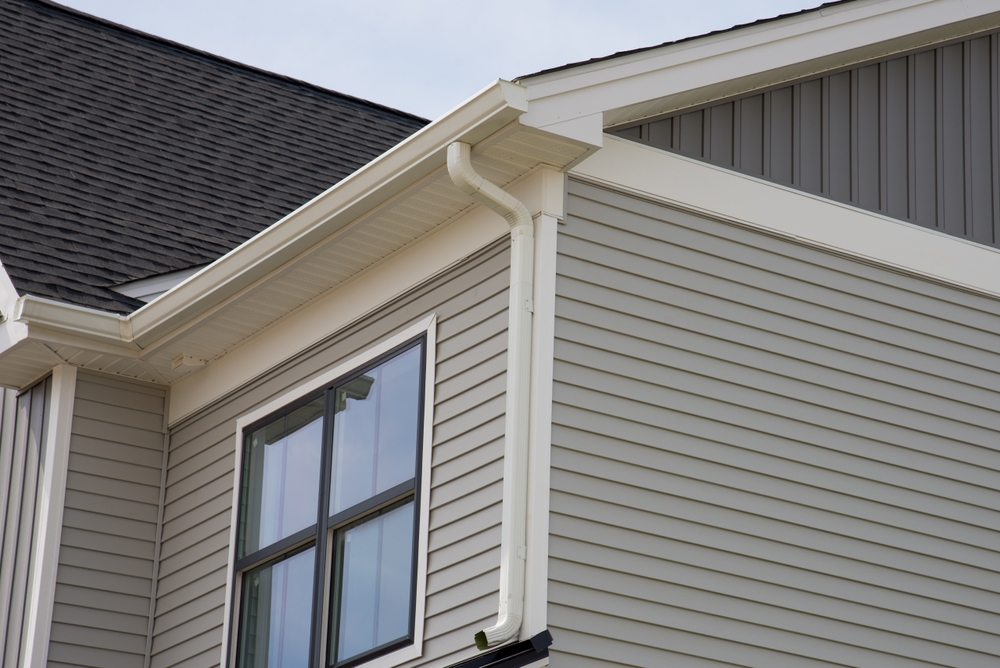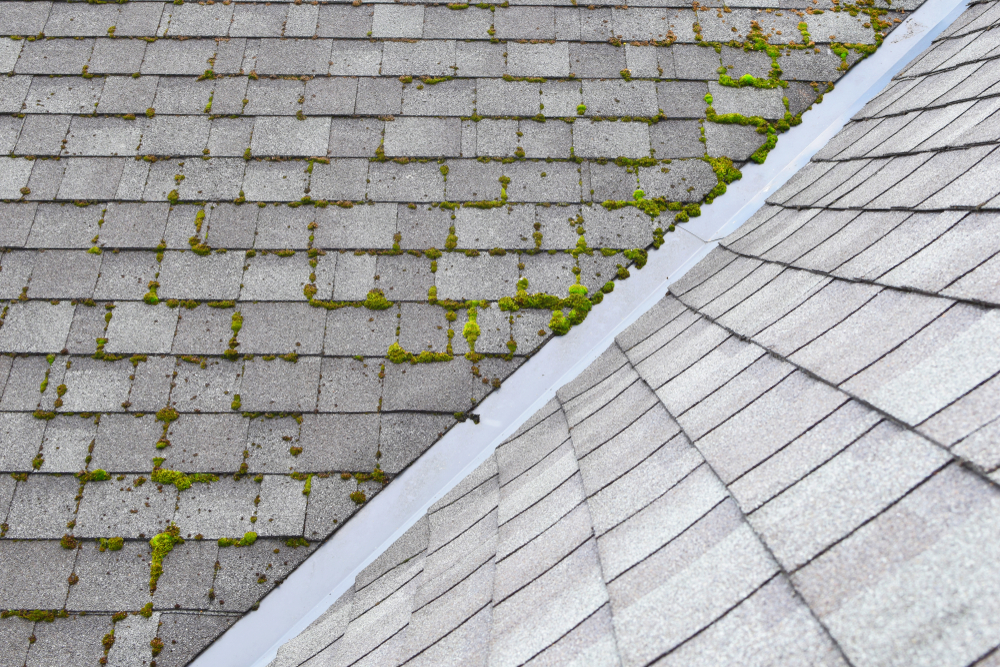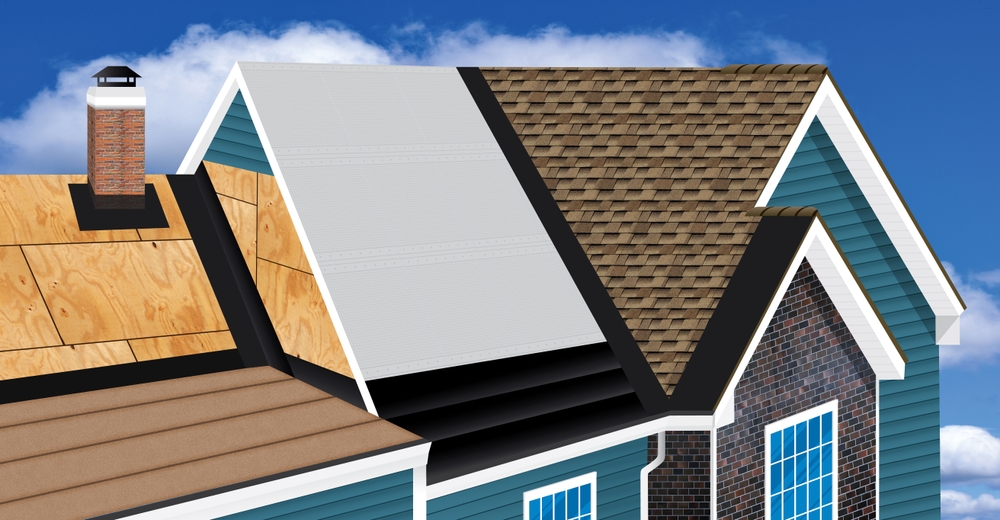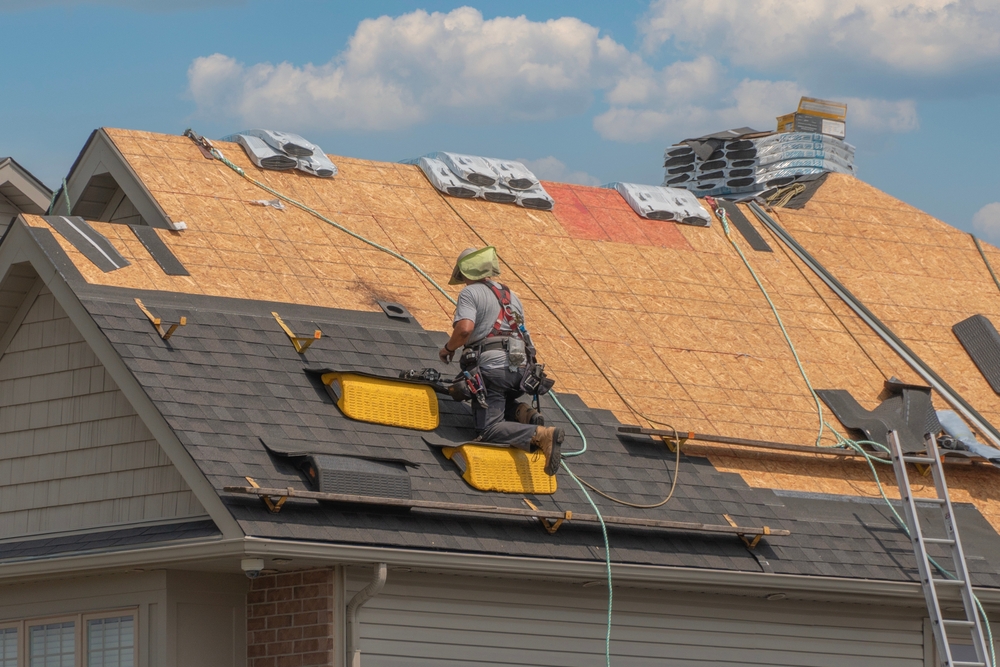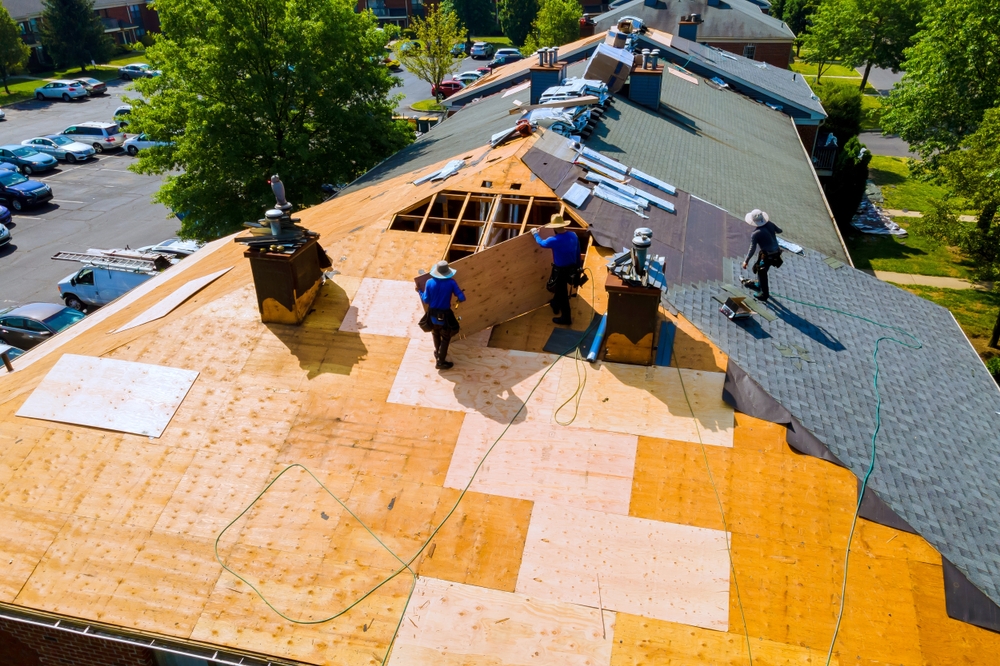Are Gutters Included in Roof Replacement? What to Know
Getting a new roof in Bucks County is a big project, a significant investment in protecting your home. You’re thinking about materials, contractors, and costs. Then another question pops up: are gutters included in roof replacement?
If you aren’t replacing your gutters, don’t forget you can also hire a power washing company in Bucks County to help make your gutters look brand new again. Replacing your gutters in the new roof project most of the time makes sense, but let us explain below. Our general contractors in Bucks and Montgomery County can help with your next exterior remodeling project, give us a call if you are interested in a free estimate.
This is a very frequent query homeowners have. You’re already managing a major home improvement project; knowing if gutters are part of the deal or a separate cost is important for planning. The answer depends on the specifics, but understanding the typical process helps avoid surprises later. Knowing if gutters are included in roof replacement upfront is beneficial.
What Typically Happens to Gutters During a Roof Replacement?
Let’s address this directly. Most often, unless you specifically arrange and pay for gutter replacement as part of your roofing project, your existing gutters will remain. A professional roofing contractor doesn’t automatically remove them when they replace the roof.
Instead, the roofing crew usually works carefully to protect your current gutters. They might use tarps to cover them and position ladders thoughtfully. Good crews try to avoid causing gutter damage by not leaning ladders directly on the gutter face during the roof installation.
However, there are exceptions. If your project involves replacing fascia boards (the trim behind the gutters), the gutters in those sections must be removed temporarily. Also, if your gutters are in poor condition or you’ve decided it’s time for an upgrade, they will be removed, typically after the new roof is finished, ready for the new gutters install.
Should You Replace Your Gutters When Getting a New Roof?
Here’s where you have a choice to make. Many homeowners decide to handle both roof and gutter replacement simultaneously, but it depends on your specific situation and budget. A comprehensive roof inspection should offer clarity.
Your roofing contractor should assess the state of your existing gutters during their initial evaluation, often part of a free inspection. If they spot leaks, gutters pulling away from the house, dents, or significant rust, getting the gutters replaced along with the roof is practical. This approach addresses potential water damage issues before they escalate, preventing costly future repairs.
If you’re wondering about the condition, look for clear indicators. Visible sagging or detachment from the house means the fasteners have failed or the fascia may be weakening. Cracks, holes, or widespread rust obviously mean the gutter material itself is failing and won’t channel water correctly.
Reasons to Consider Replacing Gutters with Your Roof
Several factors might lead you to replace gutters at the same time as your roof.
First, assess their current condition thoroughly. Are your gutters visibly sagging, cracked, peeling paint, or showing rust? Have you seen signs of failure like standing water near your foundation after rain, stains on your siding below the gutters, or mildew growth? Old or damaged gutters aren’t effectively managing water, potentially causing damage to your new roof, the underlying structure, and your foundation. Issues like clogged gutters or noticeable gutter damage often require attention.
Age is another important consideration. Most aluminum gutters have a lifespan of about 20 years, while copper can last 50 years or more, and steel falls somewhere in between. If your gutters are approaching the end of their expected service life, replacing them during the roof replacement project avoids the hassle and expense of a separate gutter installation shortly afterward. Tackling it all in one replacement project is often more efficient.
Coordination offers significant advantages. Managing one project with a single roofing company simplifies communication, scheduling, and billing compared to hiring a separate gutter company later. This prevents potential disputes where one contractor might blame the other if issues arise. Dealing with multiple companies can add stress you don’t need during a major home renovation.
Perhaps you simply want an aesthetic upgrade. A roof replacement provides a perfect opportunity to enhance your home’s exterior appeal with new gutters. You could choose a different color, a style like half-round instead of K-style, or upgrade to a more durable material such as galvanized steel or elegant copper.
There’s also an element of risk mitigation. While careful crews work hard to keep gutters safe, there’s always a small chance of accidental damage during roof installation due to falling debris, foot traffic, or ladder placement. Choosing to get gutters replaced eliminates this concern entirely. Avoiding damaging existing gutters is a priority, but accidents can happen.
Reasons You Might Keep Your Existing Gutters
Conversely, there are valid arguments for keeping your current gutters.
If your existing gutters are relatively new and still in good shape, there’s likely no pressing functional reason to replace them. A thorough roof inspection can confirm they are securely attached, free from major damage, and performing adequately. If they are in good condition, you might decide you don’t replace them now.
Budget constraints are often the primary factor. A roof replacement is a substantial financial undertaking. Adding new gutters increases the total cost considerably, accounting for materials and additional labor costs. If your budget is tight and your gutters are still functional and properly maintained, delaying the gutter replacement might be the necessary choice.
The final decision depends on a careful evaluation during the roof inspection. Your contractor should provide an honest assessment, possibly as part of a free inspection, but you make the final call based on condition and finances.
Understanding the Roof Replacement Process & Gutter Interaction
Knowing the steps involved in a roof replacement helps clarify how gutters fit into the picture. The typical roofing process includes several key stages, whether for residential or light commercial roofing work.
It begins with a detailed roof inspection to assess the current roof’s condition and identify any problems like missing shingles, soft spots, or previous leak evidence. Following this is the tear-off phase, where old roofing material is removed down to the roof deck. This critical step allows for a close inspection of the underlying structure, checking for rot, water damage, or other issues that need repair before the new roof installation.
Next, necessary repairs to the roof deck are completed, and the surface is prepared. This preparation often involves installing new underlayment and ice/water shields, particularly in vulnerable areas like valleys, eaves, and around penetrations. Finally, the new roofing materials (such as asphalt shingles, tiles, or metal panels) are installed following manufacturer guidelines and local building codes. The last step involves meticulous cleanup of the site, including removing debris water and materials from the yard and surrounding areas.
How Gutters Come into Play
Gutters interact with this roofing process in several distinct ways.
Sometimes, the way gutters are attached can make it difficult to properly access the very edge of the roof deck. Correct installation of essential components like the drip edge flashing requires clear access, which might be easier if the gutters are temporarily detached or if new gutters are installed after the roof. Many roofing contractors prefer adding gutters after the new roof is on to ensure this edge detail is perfectly sealed and protected.
If you decide to keep your existing gutters, the roofing crew must work carefully around them. This involves more than just cautious ladder placement; it also means managing falling debris during the tear-off and installation phases to prevent clogging or damaging the gutters. Protecting the existing roof elements not being replaced, like soffits and fascia (unless they are also being replaced), is part of a professional job.
Whether gutters are replaced or not, a reputable roofing contractor will complete the job by cleaning debris out of the gutters. This final check ensures they can function properly immediately after the roof work is finished. This step is vital for the longevity of both the roof and the gutters.
How are Gutters Included in Roof Replacement Costs?
It’s crucial to realize that gutter replacement is nearly always quoted as a separate item, not automatically included in the standard cost of roof installation. If you want new gutters installed during your roof replacement project, you must specifically request they be included in the estimate.
The cost for adding gutters varies significantly based on several factors. Standard aluminum gutters, the most popular choice, might range from approximately $10 to $13 per linear foot installed, but this is just a general ballpark figure. Galvanized steel might be slightly more, while premium copper gutters are substantially more expensive, potentially reaching $40-$50 per linear foot or even higher depending on the market and complexity. Understanding these costs helps manage the overall replacement project budget.
The total price depends heavily on labor costs, which vary by region and contractor. Be cautious of unbelievably low bids or offers of a ‘free roof’ bundled with other services, as quality might be compromised.
Here’s a table outlining key cost factors:
| Factor | How it Affects Cost |
|---|---|
| Material | Aluminum is common; steel, zinc, vinyl, and copper have varying price points and lifespans. |
| Style & Size | Standard K-style gutters are common vs. half-round styles; larger 6-inch gutters cost more than standard 5-inch due to material volume and potentially heavier gauge needs. |
| Linear Footage | The total perimeter length of your house dictates the amount of gutter material required. |
| Complexity | The number of corners (inside and outside miters), downspout locations, and the height of your home (number of stories) significantly affect installation time and labor costs. |
| Contractor Pricing | Company overhead, insurance costs, and whether they use an in-house crew for gutters or subcontract impact the final price. Some companies may have a dedicated gutter division. |
| Add-ons | Optional features like gutter guards or screens to block leaves and debris will add to the material and installation cost but can reduce future cleaning needs. |
| Removal/Disposal | The cost to remove gutters and dispose of the old ones might be factored into the quote. |
Always insist on receiving a detailed, itemized quote that clearly separates the roof replacement cost from the gutter replacement cost. This transparency allows you to understand precisely what services and materials you are paying for. It also makes comparing proposals from multiple companies much easier and more accurate.
Finding the Right Contractor: Roofing and Gutter Services
If you decide you need your gutters replaced, who should perform the work? Many established roofing contractors also offer gutter installation services. Opting for one contractor for both tasks can be highly convenient, streamlining the project under a single contract and point of contact.
Some larger roofing companies maintain dedicated teams or operate an in-house gutter division specifically for these installations. Others may subcontract the gutter work to a specialized local gutter company they partner with regularly. It’s always a good idea to ask potential roofing contractors about their approach to gutter replacements – do they offer gutter services directly, or do they outsource?
What if you decide against replacing gutters now but anticipate needing them in the future? Many roofing companies provide standalone gutter replacements, even if they didn’t install your current roof. However, some contractors might only offer gutter work when bundled with a full roof replacement. Alternatively, you can always hire a dedicated gutter company independently when the time comes for gutter work.
Choosing Your Team
Whether you bundle services or hire separate contractors, thorough vetting is essential. Verify that the contractor holds the necessary state and local licenses (like ROC #316925 if applicable in Arizona) and carries adequate insurance, including general liability and workers’ compensation. Look for online reviews, ratings, and testimonials from previous clients; positive feedback, like comments mentioning specific team members or positive project outcomes (similar to experiences shared by Joel Casson or Thomas van Uffelen for vetted companies), can provide valuable insight into their reliability and work quality.
Local roofing expertise means familiarity with regional weather challenges (like intense sun, monsoons, or heavy snow) and specific building code requirements. For example, a reputable Bucks County roof replacement company understands how Pennsylvania cold, heat and storms impact roofing materials and installation techniques.
Don’t hesitate to inquire about potential upgrades during your roof replacement project. This could include improving attic ventilation for better energy efficiency or even exploring integrated services like solar panel installations, which might be more cost-effective while roofing crews are already mobilized.
The Importance of Functional Gutters for Your New Roof
It’s easy to get caught up in selecting shingles and focusing on the main roof surface, but don’t overlook the critical role your gutters play. They are an essential component of your home’s comprehensive water management system. A proper gutter system protects your significant investment in that new roof, along with your foundation, landscaping, and siding.
When gutters become clogged with leaves, pine needles, or other debris, or if they are damaged (bent, leaking, detached), they cannot effectively channel rainwater away from your house. This failure can cause water to overflow, potentially running down your siding, leading to stains and rot. Water pooling near the foundation can cause soil erosion, basement leaks, or even foundation cracks over time; this standing water is a serious issue causing damage.
Overflowing water can also back up onto the edge of the roof itself, particularly behind the fascia board. This persistent moisture can wick upwards beneath the shingles, potentially damaging the roof deck, fascia, and soffits – the underlying structure of your roof’s edge. This creates ideal conditions for wood rot and leaks, undermining the integrity of the very roof you just had replaced and potentially compromising vulnerable areas.
Maintain Your System
Whether you keep your old gutters or install brand new ones, regular maintenance is vital for them to function properly. This involves routine cleaning to remove leaves, twigs, shingle granules, and other debris that can cause blockages and prevent water flow. Consistent gutter and roof maintenance is a preventative measure that helps avoid more costly repairs down the line.
Simple maintenance roof checks should include visually inspecting gutters for blockages, ensuring they are securely fastened to the fascia, and looking for any signs of damage like cracks, holes, or sagging sections. Addressing minor issues early, like re-securing a loose section or patching a small leak, saves considerable hassle and expense compared to letting problems worsen. Remember, properly maintained gutters extend the life and improve the performance of your entire roof system; this maintenance roof maintenance approach is highly recommended.
For homeowners who find gutter cleaning difficult or dangerous, professional gutter cleaning services are available. Some homeowners also opt for gutter guards, which can reduce the frequency of cleaning, though they aren’t entirely maintenance-free and require periodic checks themselves. Keeping gutters clear ensures water is directed away from your home, protecting its structure and foundation for years to come; this is a cornerstone of gutter maintenance roof maintenance.
FAQs about are gutters included in roof replacement
Let’s address a few more frequently asked questions regarding gutters and roof replacements.
Is guttering part of the roof?
Functionally, gutters work together with the roof as a complete system to manage water and protect your home. However, from a contractual, insurance, or project scope perspective, gutters are typically considered a separate component from the roof covering (shingles, tiles, metal). Think of them as a critical accessory attached to the roof structure, rather than an integral part of the primary roofing material installation itself.
Are roof gutters covered by insurance?
The answer depends heavily on your specific homeowner’s insurance policy and the cause of the damage. If gutters are damaged due to a covered peril, such as hail, high winds (storm damage), or impact from a falling tree limb, your insurance policy will likely cover the cost of repair or replacement, subject to your deductible. However, insurance generally does not cover replacement needed due to old age, lack of maintenance (like damage from clogged gutters freezing), rust, or general wear and tear. Documenting storm damage promptly is important for claims.
How much does it cost to replace gutters on a 2000 square foot house?
Estimating this requires knowing the linear footage of gutters needed, which depends on the house’s perimeter, not just its square footage. A typical 2000 sq ft single-story home might have roughly 150-250 linear feet of gutters. Using the general range of $10-$13 per linear foot for standard aluminum gutters, the cost for replacing gutters might fall between $1,500 and $3,250, but this is a very rough estimate.
Factors like the complexity of the roofline (more corners mean more complex cuts and miters), the number of downspouts needed, the height of the house (two-story homes require more labor and safety precautions), your choice of material (vinyl, steel, copper), local labor costs, and removal of old gutters will significantly impact the final price. It’s crucial to get specific quotes from local contractors for accurate gutter replacements pricing.
Should gutters be installed before or after a roof?
The widely recommended practice among roofing professionals is to install new gutters after the new roof installation is complete. This sequence allows for the unobstructed installation of critical roof edge components like drip edge flashing and underlayment, ensuring maximum water protection at the eaves. Installing gutters afterward also prevents potential damage to the new gutters from ladders, foot traffic, or falling debris during the roof replacement process itself. Adding gutters post-roofing ensures a clean finish.
Conclusion
Figuring out if gutters are included in roof replacement is straightforward once you know what to expect. Typically, gutter work is treated as a separate service and cost unless specifically included in your roofing contract. The choice to replace your gutters when your roof is replaced hinges on their current condition, your available budget, and your overall goals for home maintenance and appearance.
Clear and open communication with your chosen roofing contractor in Perkasie and surrounding area is vital throughout the process. Discuss the state of your existing gutters during the initial roof inspection, listen to their recommendations, and ensure the final quote explicitly details whether gutter work (removal, replacement, or installation) is included and at what cost. Having a functional roof and a proper gutter system working together provides the most effective protection for your home against water damage.
Considering the question “are gutters included in roof replacement” early ensures you can plan your project scope and budget effectively, leading to a smoother renovation experience. Whether you don’t replace them now or opt for new ones, remember that regular gutter maintenance is key to safeguarding your investment.

